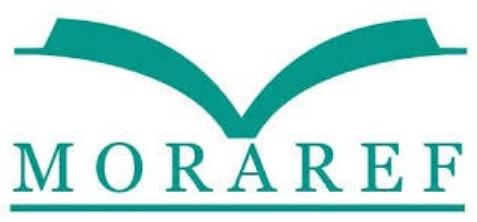Hybrid Contracts in Islamic Financial Institutions: An Analysis of Multi-contract Models
Abstract
Keywords
Full Text:
PDFReferences
AAOIFI. (2017). Shari’ah Standards Accounting and Auditing Organization for Islamic Financial Institutions (AAOIFI). منشورات جامعة دمشق, 1999.
Abdulahana. (2014). Kaidah-kaidah Keabsahan Multi Akad, Hybrid Contract. rust Media.
Abdullâh bin Muhammad bin Abdullâh al-‘Imrâni. (2006). Al-’uqûd al-Mâliyah al-Murakkabah: Dirâsah Fiqhiyyah Ta’shîliyah wa Tathbîqiyyah, (1st ed.). Dâr Kunûz Eshbelia li al-Nasyr wa al-Tauzî’.
Ali al-Khafi. (n.d.). Ahkaam al-Mu‘amalah al-Shar‘iyah . Darul arabi.
Archer, S., & Karim, R. A. A. (2012). Islamic Finance: The Regulatory Challenge. In Islamic Finance: The Regulatory Challenge. https://doi.org/10.1002/9781118390443
Dhani Gunawan Idat. (2015). Pelatihan Wartawan OJK.
El-Gama, M. A. (2006). Islamic finance: Law, economics, and practice. In Islamic Finance: Law, Economics, and Practice. https://doi.org/10.1017/CBO9780511753756
Iqbal, Z., & Shafiq, B. (2015). Islamic economics and inclusive development. International Journal of Pluralism and Economics Education, 6(4). https://doi.org/10.1504/ijpee.2015.075861
Ismail Nawawi. (2015). Bisnis Jasa Industri Bank Syari’ah Model Bisnis dan Strategi Pendekatan Ketangkasan Managemen dan Manufaktur. Viv Press.
Syafi’i Antonio. (2001). Bank Syariah dari Teori ke Praktek. Gema Insani.
Understanding Islamic Finance. (2012). In Understanding Islamic Finance. https://doi.org/10.1002/9781119209096
Usmani, M. T. (2002). An Introduction to Islamic Finance. The Hague, Kluwer Law International. In An Introduction to Islamic Finance. The Hague, Kluwer Law International.
DOI: http://dx.doi.org/10.31332/lifalah.v9i1.9847
Copyright (c) 2024 Siti Musfiqoh, Sukamto Sukamto

This work is licensed under a Creative Commons Attribution-ShareAlike 4.0 International License.
Li Falah : Jurnal Studi Ekonomi dan Bisnis Islam, Indexed In
Accredited By
View My Stats
Organized by : Fakultas Ekonomi dan Bisnis Islam
Published by : Institut Agama Islam Negeri Kendari
Jl. Sultan Qaimuddin No. 17 Baruga Kota Kendari Provinsi Sulawesi Tenggara
phone. +62401-3193710
Fax. +62401-3193710
Email: [email protected]












